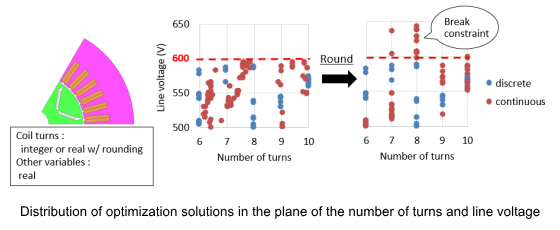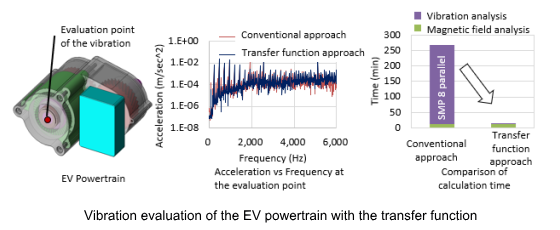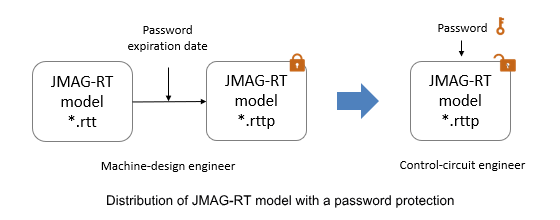

New JMAG Ver.24.0 Out Now
In January 2025, JMAG-Designer Ver. 24.0 was released.
JMAG is being developed to automate design. To this end, Ver. 24.0 has even more improved functionality.
This section picks up on the functional improvements and new features in Ver. 24.0.
Support discrete values of design variables in optimization
Now that the design variables for optimization can be treated as discrete values, the obtained optimal shape can be used directly in the design. For example, in continuous optimization, rounding the number of coil turns to a whole number could result in a case in which the line-to-line voltage constraint is exceeded, but by using discrete optimization, optimization can include design variables that are limited to discrete values by standards and other factors. This improves design efficiency and smoothes the design process.

Vibration Calculation using Transfer Function
Vibration calculations with transfer functions speed up vibration evaluation at the system level. Specifically, the transfer function shortens the vibration analysis and allows for fast minimization of gearbox vibration due to the electromagnetic forces of the motor, using the motor dimensions as variables. This allows for an early design proposal in which system-level vibration is taken into account, preventing rework in the design process.

Reducing Optimization Calculation Time
Optimization processing time for multiple concurrent executions has been reduced. Specifically, improvements in internal processing have increased distributed processing efficiency from 74% to 77% at 1,000 concurrent executions and from 60% to 66% at 2,000 concurrent executions. This allows more efficient use of computational resources and speeds up the design process.
MPP Parallel Support for Direct Solver
MPP parallel support for the direct method reduces analysis time even when the convergence of the ICCG method is poor. Specifically, in large-scale calculations of AC losses, the poor convergence of the ICCG method has resulted in long computation times. However, by enabling the use of MPP in the direct method, the calculation time is no longer affected by the convergence of the iterative method, and the calculation time was reduced from 77 hours to 2 hours for the motor model used for verification. This greatly streamlines the analysis process and shortens the design cycle.
Password protection of JMAG-RT model
Password management of JMAG-RT models allows for more secure model distribution. Specifically, the creator of a JMAG-RT model sets a password and usage deadline in JMAG-RT Viewer, and the control designer can use the model by entering the password received from the creator. This prevents models from being deployed for unintended purposes or to unintended users, and allows for proper and more effective operation of the models.

To read more, please see the following page!
- Learning How to Use JMAG
Are you interested in JMAG, but don’t know where to start? Want to find out more?
“Learning how to use JMAG” is an introductory guide that will take you through a step-by-step process on how to start and use JMAG for the first time.


